To the Shareholders of Berkshire Hathaway Inc.:
Our gain in net worth during 1989 was $1.515 billion, or
44.4%. Over the last 25 years (that is, since present management
took over) our per-share book value has grown from $19.46 to
$4,296.01, or at a rate of 23.8% compounded annually.
What counts, however, is intrinsic value - the figure
indicating what all of our constituent businesses are rationally
worth. With perfect foresight, this number can be calculated by
taking all future cash flows of a business - in and out - and
discounting them at prevailing interest rates. So valued, all
businesses, from manufacturers of buggy whips to operators of
cellular phones, become economic equals.
Back when Berkshire's book value was $19.46, intrinsic
value was somewhat less because the book value was entirely tied
up in a textile business not worth the figure at which it was
carried. Now most of our businesses are worth far more than their
carrying values. This agreeable evolution from a discount to a
premium means that Berkshire's intrinsic business value has
compounded at a rate that somewhat exceeds our 23.8% annual
growth in book value.
The rear-view mirror is one thing; the windshield is
another. A large portion of our book value is represented by
equity securities that, with minor exceptions, are carried on our
balance sheet at current market values. At yearend these
securities were valued at higher prices, relative to their own
intrinsic business values, than has been the case in the past.
One reason is the buoyant 1989 stock market. More important, the
virtues of these businesses have been widely recognized. Whereas
once their stock prices were inappropriately low, they are not
now.
We will keep most of our major holdings, regardless of how
they are priced relative to intrinsic business value. This 'til-
death-do-us-part attitude, combined with the full prices these
holdings command, means that they cannot be expected to push up
Berkshire's value in the future as sharply as in the past. In
other words, our performance to date has benefited from a double-
dip: (1) the exceptional gains in intrinsic value that our
portfolio companies have achieved; (2) the additional bonus we
realized as the market appropriately "corrected" the prices of
these companies, raising their valuations in relation to those of
the average business. We will continue to benefit from good gains
in business value that we feel confident our portfolio companies
will make. But our "catch-up" rewards have been realized, which
means we'll have to settle for a single-dip in the future.
We face another obstacle: In a finite world, high growth
rates must self-destruct. If the base from which the growth is
taking place is tiny, this law may not operate for a time. But
when the base balloons, the party ends: A high growth rate
eventually forges its own anchor.
Carl Sagan has entertainingly described this phenomenon,
musing about the destiny of bacteria that reproduce by dividing
into two every 15 minutes. Says Sagan: "That means four doublings
an hour, and 96 doublings a day. Although a bacterium weighs only
about a trillionth of a gram, its descendants, after a day of
wild asexual abandon, will collectively weigh as much as a
mountain...in two days, more than the sun - and before very long,
everything in the universe will be made of bacteria." Not to
B
E
R
K
S
H
I
R
E
H
A
T
H
A
W
A
Y
I
N
C
.
�
worry, says Sagan: Some obstacle always impedes this kind of
exponential growth. "The bugs run out of food, or they poison
each other, or they are shy about reproducing in public."
Even on bad days, Charlie Munger (Berkshire's Vice Chairman
and my partner) and I do not think of Berkshire as a bacterium.
Nor, to our unending sorrow, have we found a way to double its
net worth every 15 minutes. Furthermore, we are not the least bit
shy about reproducing - financially - in public. Nevertheless,
Sagan's observations apply. From Berkshire's present base of $4.9
billion in net worth, we will find it much more difficult to
average 15% annual growth in book value than we did to average
23.8% from the $22 million we began with.
Taxes
Our 1989 gain of $1.5 billion was achieved after we took a
charge of about $712 million for income taxes. In addition,
Berkshire's share of the income taxes paid by its five major
investees totaled about $175 million.
Of this year's tax charge, about $172 million will be paid
currently; the remainder, $540 million, is deferred. Almost all
of the deferred portion relates to the 1989 increase in
unrealized profits in our common stock holdings. Against this
increase, we have reserved a 34% tax.
We also carry reserves at that rate against all unrealized
profits generated in 1987 and 1988. But, as we explained last
year, the unrealized gains we amassed before 1987 - about $1.2
billion - carry reserves booked at the 28% tax rate that then
prevailed.
A new accounting rule is likely to be adopted that will
require companies to reserve against all gains at the current tax
rate, whatever it may be. With the rate at 34%, such a rule would
increase our deferred tax liability, and decrease our net worth,
by about $71 million - the result of raising the reserve on our
pre-1987 gain by six percentage points. Because the proposed rule
has sparked widespread controversy and its final form is unclear,
we have not yet made this change.
As you can see from our balance sheet on page 27, we would
owe taxes of more than $1.1 billion were we to sell all of our
securities at year-end market values. Is this $1.1 billion
liability equal, or even similar, to a $1.1 billion liability
payable to a trade creditor 15 days after the end of the year?
Obviously not - despite the fact that both items have exactly the
same effect on audited net worth, reducing it by $1.1 billion.
On the other hand, is this liability for deferred taxes a
meaningless accounting fiction because its payment can be
triggered only by the sale of stocks that, in very large part, we
have no intention of selling? Again, the answer is no.
In economic terms, the liability resembles an interest-free
loan from the U.S. Treasury that comes due only at our election
(unless, of course, Congress moves to tax gains before they are
realized). This "loan" is peculiar in other respects as well: It
can be used only to finance the ownership of the particular,
appreciated stocks and it fluctuates in size - daily as market
prices change and periodically if tax rates change. In effect,
this deferred tax liability is equivalent to a very large
transfer tax that is payable only if we elect to move from one
asset to another. Indeed, we sold some relatively small holdings
in 1989, incurring about $76 million of "transfer" tax on $224
million of gains.
Because of the way the tax law works, the Rip Van Winkle
�
style of investing that we favor - if successful - has an
important mathematical edge over a more frenzied approach. Let's
look at an extreme comparison.
Imagine that Berkshire had only $1, which we put in a
security that doubled by yearend and was then sold. Imagine
further that we used the after-tax proceeds to repeat this
process in each of the next 19 years, scoring a double each time.
At the end of the 20 years, the 34% capital gains tax that we
would have paid on the profits from each sale would have
delivered about $13,000 to the government and we would be left
with about $25,250. Not bad. If, however, we made a single
fantastic investment that itself doubled 20 times during the 20
years, our dollar would grow to $1,048,576. Were we then to cash
out, we would pay a 34% tax of roughly $356,500 and be left with
about $692,000.
The sole reason for this staggering difference in results
would be the timing of tax payments. Interestingly, the
government would gain from Scenario 2 in exactly the same 27:1
ratio as we - taking in taxes of $356,500 vs. $13,000 - though,
admittedly, it would have to wait for its money.
We have not, we should stress, adopted our strategy
favoring long-term investment commitments because of these
mathematics. Indeed, it is possible we could earn greater after-
tax returns by moving rather frequently from one investment to
another. Many years ago, that's exactly what Charlie and I did.
Now we would rather stay put, even if that means slightly
lower returns. Our reason is simple: We have found splendid
business relationships to be so rare and so enjoyable that we
want to retain all we develop. This decision is particularly
easy for us because we feel that these relationships will produce
good - though perhaps not optimal - financial results.
Considering that, we think it makes little sense for us to give
up time with people we know to be interesting and admirable for
time with others we do not know and who are likely to have human
qualities far closer to average. That would be akin to marrying
for money - a mistake under most circumstances, insanity if one
is already rich.
Sources of Reported Earnings
The table below shows the major sources of Berkshire's
reported earnings. In this presentation, amortization of Goodwill
and other major purchase-price accounting adjustments are not
charged against the specific businesses to which they apply, but
are instead aggregated and shown separately. This procedure lets
you view the earnings of our businesses as they would have been
reported had we not purchased them. I've explained in past
reports why this form of presentation seems to us to be more
useful to investors and managers than one utilizing generally
accepted accounting principles (GAAP), which require purchase-
price adjustments to be made on a business-by-business basis. The
total net earnings we show in the table are, of course, identical
to the GAAP total in our audited financial statements.
Further information about these businesses is given in the
Business Segment section on pages 37-39, and in the Management's
Discussion section on pages 40-44. In these sections you also
will find our segment earnings reported on a GAAP basis. For
information on Wesco's businesses, I urge you to read Charlie
Munger's letter, which starts on page 54. In addition, we have
reprinted on page 71 Charlie's May 30, 1989 letter to the U. S.
League of Savings Institutions, which conveyed our disgust with
its policies and our consequent decision to resign.
�
(000s omitted)
----------------------------------------------
Berkshire's Share
of Net Earnings
(after taxes and
Pre-Tax Earnings minority interests)
---------------------- ----------------------
1989 1988 1989 1988
---------- ---------- ---------- ----------
Operating Earnings:
Insurance Group:
Underwriting ............ $(24,400) $(11,081) $(12,259) $ (1,045)
Net Investment Income ... 243,599 231,250 213,642 197,779
Buffalo News .............. 46,047 42,429 27,771 25,462
Fechheimer ................ 12,621 14,152 6,789 7,720
Kirby ..................... 26,114 26,891 16,803 17,842
Nebraska Furniture Mart ... 17,070 18,439 8,441 9,099
Scott Fetzer
Manufacturing Group .... 33,165 28,542 19,996 17,640
See's Candies ............. 34,235 32,473 20,626 19,671
Wesco - other than Insurance 13,008 16,133 9,810 10,650
World Book ................ 25,583 27,890 16,372 18,021
Amortization of Goodwill .. (3,387) (2,806) (3,372) (2,806)
Other Purchase-Price
Accounting Charges ........ (5,740) (6,342) (6,668) (7,340)
Interest Expense* ......... (42,389) (35,613) (27,098) (23,212)
Shareholder-Designated
Contributions .......... (5,867) (4,966) (3,814) (3,217)
Other ..................... 23,755 41,059 12,863 27,177
---------- ---------- ---------- ----------
Operating Earnings .......... 393,414 418,450 299,902 313,441
Sales of Securities ......... 223,810 131,671 147,575 85,829
---------- ---------- ---------- ----------
Total Earnings - All Entities $617,224 $550,121 $447,477 $399,270
*Excludes interest expense of Scott Fetzer Financial Group and
Mutual Savings & Loan.
We refer you also to pages 45-51, where we have rearranged
Berkshire's financial data into four segments. These correspond
to the way Charlie and I think about the business and should help
you calculate Berkshire's intrinsic value. Shown on these pages
are balance sheets and earnings statements for: (1) our
insurance operations, with their major investment positions
itemized; (2) our manufacturing, publishing and retailing
businesses, leaving aside certain non-operating assets and
purchase-price accounting adjustments; (3) our subsidiaries
engaged in finance-type operations, which are Mutual Savings and
Scott Fetzer Financial; and (4) an all-other category that
includes the non-operating assets (primarily marketable
securities) held by the companies in segment (2), all purchase
price accounting adjustments, and various assets and debts of the
Wesco and Berkshire parent companies.
If you combine the earnings and net worths of these four
segments, you will derive totals matching those shown on our GAAP
statements. However, I want to emphasize that this four-category
presentation does not fall within the purview of our auditors,
who in no way bless it.
In addition to our reported earnings, we also benefit from
significant earnings of investees that standard accounting rules
do not permit us to report. On page 15, we list five major
investees from which we received dividends in 1989 of about $45
million, after taxes. However, our share of the retained earnings
of these investees totaled about $212 million last year, not
counting large capital gains realized by GEICO and Coca-Cola. If
this $212 million had been distributed to us, our own operating
�
earnings, after the payment of additional taxes, would have been
close to $500 million rather than the $300 million shown in the
table.
The question you must decide is whether these undistributed
earnings are as valuable to us as those we report. We believe
they are - and even think they may be more valuable. The reason
for this a-bird-in-the-bush-may-be-worth-two-in-the-hand
conclusion is that earnings retained by these investees will
be deployed by talented, owner-oriented managers who
sometimes have better uses for these funds in their own
businesses than we would have in ours. I would not make such a
generous assessment of most managements, but it is appropriate in
these cases.
In our view, Berkshire's fundamental earning power is best
measured by a "look-through" approach, in which we append our
share of the operating earnings retained by our investees to our
own reported operating earnings, excluding capital gains in both
instances. For our intrinsic business value to grow at an average
of 15% per year, our "look-through" earnings must grow at about
the same pace. We'll need plenty of help from our present
investees, and also need to add a new one from time to time, in
order to reach this 15% goal.
Non-Insurance Operations
In the past, we have labeled our major manufacturing,
publishing and retail operations "The Sainted Seven." With our
acquisition of Borsheim's early in 1989, the challenge was to
find a new title both alliterative and appropriate. We failed:
Let's call the group "The Sainted Seven Plus One."
This divine assemblage - Borsheim's, The Buffalo News,
Fechheimer Bros., Kirby, Nebraska Furniture Mart, Scott Fetzer
Manufacturing Group, See's Candies, World Book - is a collection
of businesses with economic characteristics that range from good
to superb. Its managers range from superb to superb.
Most of these managers have no need to work for a living;
they show up at the ballpark because they like to hit home runs.
And that's exactly what they do. Their combined financial
statements (including those of some smaller operations), shown on
page 49, illustrate just how outstanding their performance is. On
an historical accounting basis, after-tax earnings of these
operations were 57% on average equity capital. Moreover, this
return was achieved with no net leverage: Cash equivalents have
matched funded debt. When I call off the names of our managers -
the Blumkin, Friedman and Heldman families, Chuck Huggins, Stan
Lipsey, and Ralph Schey - I feel the same glow that Miller
Huggins must have experienced when he announced the lineup of his
1927 New York Yankees.
Let's take a look, business by business:
o In its first year with Berkshire, Borsheim's met all
expectations. Sales rose significantly and are now considerably
better than twice what they were four years ago when the company
moved to its present location. In the six years prior to the
move, sales had also doubled. Ike Friedman, Borsheim's managing
genius - and I mean that - has only one speed: fast-forward.
If you haven't been there, you've never seen a jewelry store
like Borsheim's. Because of the huge volume it does at one
location, the store can maintain an enormous selection across all
price ranges. For the same reason, it can hold its expense ratio
to about one-third that prevailing at jewelry stores offering
comparable merchandise. The store's tight control of expenses,
�
accompanied by its unusual buying power, enable it to offer
prices far lower than those of other jewelers. These prices, in
turn, generate even more volume, and so the circle goes 'round
and 'round. The end result is store traffic as high as 4,000
people on seasonally-busy days.
Ike Friedman is not only a superb businessman and a great
showman but also a man of integrity. We bought the business
without an audit, and all of our surprises have been on the plus
side. "If you don't know jewelry, know your jeweler" makes sense
whether you are buying the whole business or a tiny diamond.
A story will illustrate why I enjoy Ike so much: Every two
years I'm part of an informal group that gathers to have fun and
explore a few subjects. Last September, meeting at Bishop's Lodge
in Santa Fe, we asked Ike, his wife Roz, and his son Alan to come
by and educate us on jewels and the jewelry business.
Ike decided to dazzle the group, so he brought from Omaha
about $20 million of particularly fancy merchandise. I was
somewhat apprehensive - Bishop's Lodge is no Fort Knox - and I
mentioned my concern to Ike at our opening party the evening
before his presentation. Ike took me aside. "See that safe?" he
said. "This afternoon we changed the combination and now even the
hotel management doesn't know what it is." I breathed easier. Ike
went on: "See those two big fellows with guns on their hips?
They'll be guarding the safe all night." I now was ready to
rejoin the party. But Ike leaned closer: "And besides, Warren,"
he confided, "the jewels aren't in the safe."
How can we miss with a fellow like that - particularly when
he comes equipped with a talented and energetic family, Alan,
Marvin Cohn, and Don Yale.
o At See's Candies we had an 8% increase in pounds sold, even
though 1988 was itself a record year. Included in the 1989
performance were excellent same-store poundage gains, our first
in many years.
Advertising played an important role in this outstanding
performance. We increased total advertising expenditures from $4
million to $5 million and also got copy from our agency, Hal
Riney & Partners, Inc., that was 100% on the money in conveying
the qualities that make See's special.
In our media businesses, such as the Buffalo News, we sell
advertising. In other businesses, such as See's, we are buyers.
When we buy, we practice exactly what we preach when we sell. At
See's, we more than tripled our expenditures on newspaper
advertising last year, to the highest percentage of sales that I
can remember. The payoff was terrific, and we thank both Hal
Riney and the power of well-directed newspaper advertising for
this result.
See's splendid performances have become routine. But there
is nothing routine about the management of Chuck Huggins: His
daily involvement with all aspects of production and sales
imparts a quality-and-service message to the thousands of
employees we need to produce and distribute over 27 million
pounds of candy annually. In a company with 225 shops and a
massive mail order and phone business, it is no small trick to
run things so that virtually every customer leaves happy. Chuck
makes it look easy.
o The Nebraska Furniture Mart had record sales and excellent
earnings in 1989, but there was one sad note. Mrs. B - Rose
Blumkin, who started the company 52 years ago with $500 - quit in
May, after disagreeing with other members of the Blumkin
family/management about the remodeling and operation of the
�
carpet department.
Mrs. B probably has made more smart business decisions than
any living American, but in this particular case I believe the
other members of the family were entirely correct: Over the past
three years, while the store's other departments increased sales
by 24%, carpet sales declined by 17% (but not because of any lack
of sales ability by Mrs. B, who has always personally sold far
more merchandise than any other salesperson in the store).
You will be pleased to know that Mrs. B continues to make
Horatio Alger's heroes look like victims of tired blood. At age
96 she has started a new business selling - what else? - carpet
and furniture. And as always, she works seven days a week.
At the Mart Louie, Ron, and Irv Blumkin continue to propel
what is by far the largest and most successful home furnishings
store in the country. They are outstanding merchants, outstanding
managers, and a joy to be associated with. One reading on their
acumen: In the fourth quarter of 1989, the carpet department
registered a 75.3% consumer share in the Omaha market, up from
67.7% a year earlier and over six times that of its nearest
competitor.
NFM and Borsheim's follow precisely the same formula for
success: (1) unparalleled depth and breadth of merchandise at one
location; (2) the lowest operating costs in the business; (3) the
shrewdest of buying, made possible in part by the huge volumes
purchased; (4) gross margins, and therefore prices, far below
competitors'; and (5) friendly personalized service with family
members on hand at all times.
Another plug for newspapers: NFM increased its linage in the
local paper by over 20% in 1989 - off a record 1988 - and remains
the paper's largest ROP advertiser by far. (ROP advertising is
the kind printed in the paper, as opposed to that in preprinted
inserts.) To my knowledge, Omaha is the only city in which a home
furnishings store is the advertising leader. Many retailers cut
space purchases in 1989; our experience at See's and NFM would
indicate they made a major mistake.
o The Buffalo News continued to star in 1989 in three
important ways: First, among major metropolitan papers, both
daily and Sunday, the News is number one in household penetration
- the percentage of local households that purchase it each day.
Second, in "news hole" - the portion of the paper devoted to news
- the paper stood at 50.1% in 1989 vs. 49.5% in 1988, a level
again making it more news-rich than any comparable American
paper. Third, in a year that saw profits slip at many major
papers, the News set its seventh consecutive profit record.
To some extent, these three factors are related, though
obviously a high-percentage news hole, by itself, reduces profits
significantly. A large and intelligently-utilized news hole,
however, attracts a wide spectrum of readers and thereby boosts
penetration. High penetration, in turn, makes a newspaper
particularly valuable to retailers since it allows them to talk
to the entire community through a single "megaphone." A low-
penetration paper is a far less compelling purchase for many
advertisers and will eventually suffer in both ad rates and
profits.
It should be emphasized that our excellent penetration is
neither an accident nor automatic. The population of Erie County,
home territory of the News, has been falling - from 1,113,000 in
1970 to 1,015,000 in 1980 to an estimated 966,000 in 1988.
Circulation figures tell a different story. In 1975, shortly
before we started our Sunday edition, the Courier-Express, a
long-established Buffalo paper, was selling 207,500 Sunday copies
�
in Erie County. Last year - with population at least 5% lower -
the News sold an average of 292,700 copies. I believe that in no
other major Sunday market has there been anything close to that
increase in penetration.
When this kind of gain is made - and when a paper attains an
unequaled degree of acceptance in its home town - someone is
doing something right. In this case major credit clearly belongs
to Murray Light, our long-time editor who daily creates an
informative, useful, and interesting product. Credit should go
also to the Circulation and Production Departments: A paper that
is frequently late, because of production problems or
distribution weaknesses, will lose customers, no matter how
strong its editorial content.
Stan Lipsey, publisher of the News, has produced profits
fully up to the strength of our product. I believe Stan's
managerial skills deliver at least five extra percentage points
in profit margin compared to the earnings that would be achieved
by an average manager given the same circumstances. That is an
amazing performance, and one that could only be produced by a
talented manager who knows - and cares - about every nut and bolt
of the business.
Stan's knowledge and talents, it should be emphasized,
extend to the editorial product. His early years in the business
were spent on the news side and he played a key role in
developing and editing a series of stories that in 1972 won a
Pulitzer Prize for the Sun Newspaper of Omaha. Stan and I have
worked together for over 20 years, through some bad times as well
as good, and I could not ask for a better partner.
o At Fechheimer, the Heldman clan - Bob, George, Gary,
Roger and Fred - continue their extraordinary performance. Profits
in 1989 were down somewhat because of problems the business
experienced in integrating a major 1988 acquisition. These
problems will be ironed out in time. Meanwhile, return on invested
capital at Fechheimer remains splendid.
Like all of our managers, the Heldmans have an exceptional
command of the details of their business. At last year's annual
meeting I mentioned that when a prisoner enters San Quentin, Bob
and George probably know his shirt size. That's only a slight
exaggeration: No matter what area of the country is being
discussed, they know exactly what is going on with major
customers and with the competition.
Though we purchased Fechheimer four years ago, Charlie and I
have never visited any of its plants or the home office in
Cincinnati. We're much like the lonesome Maytag repairman: The
Heldman managerial product is so good that a service call is
never needed.
o Ralph Schey continues to do a superb job in managing
our largest group - World Book, Kirby, and the Scott Fetzer
Manufacturing Companies. Aggregate earnings of these businesses
have increased every year since our purchase and returns on
invested capital continue to be exceptional. Ralph is running an
enterprise large enough, were it standing alone, to be on the
Fortune 500. And he's running it in a fashion that would put him
high in the top decile, measured by return on equity.
For some years, World Book has operated out of a single
location in Chicago's Merchandise Mart. Anticipating the imminent
expiration of its lease, the business is now decentralizing into
four locations. The expenses of this transition are significant;
nevertheless profits in 1989 held up well. It will be another
year before costs of the move are fully behind us.
�

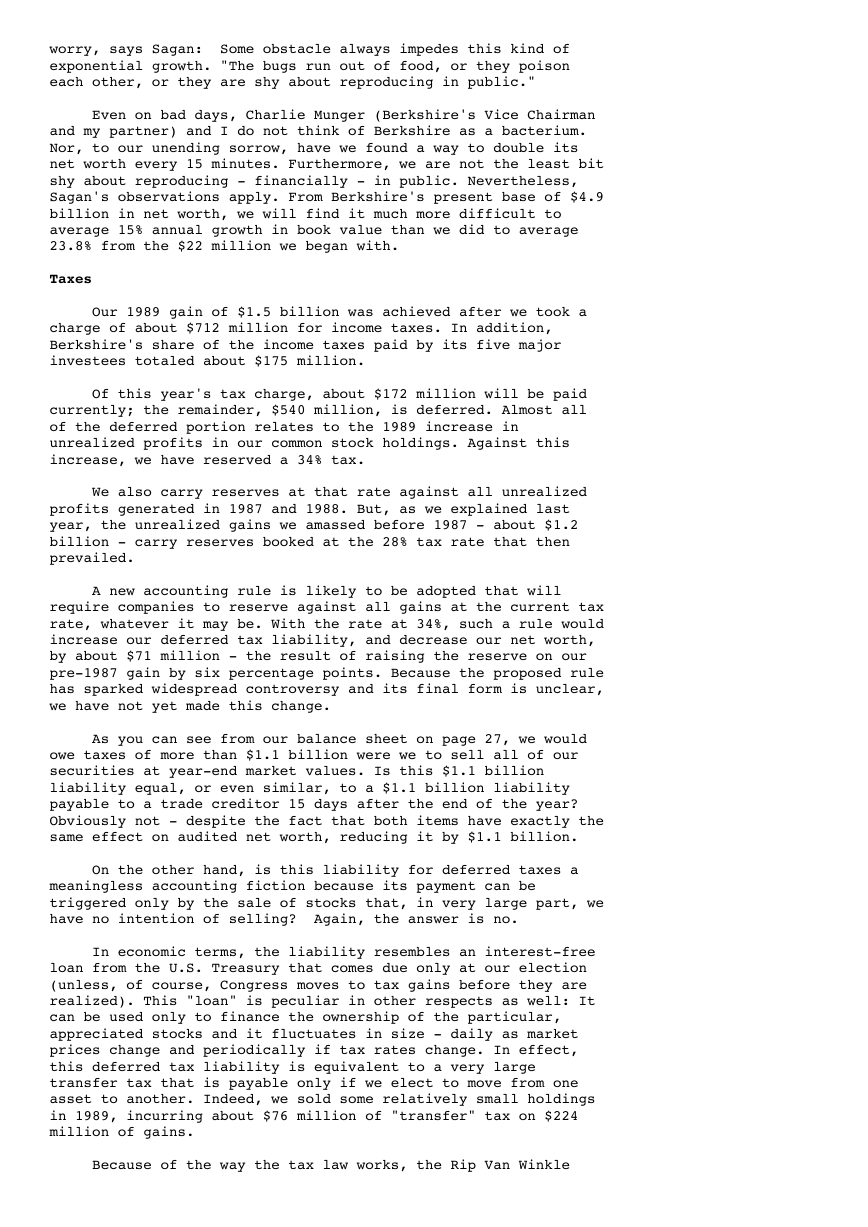

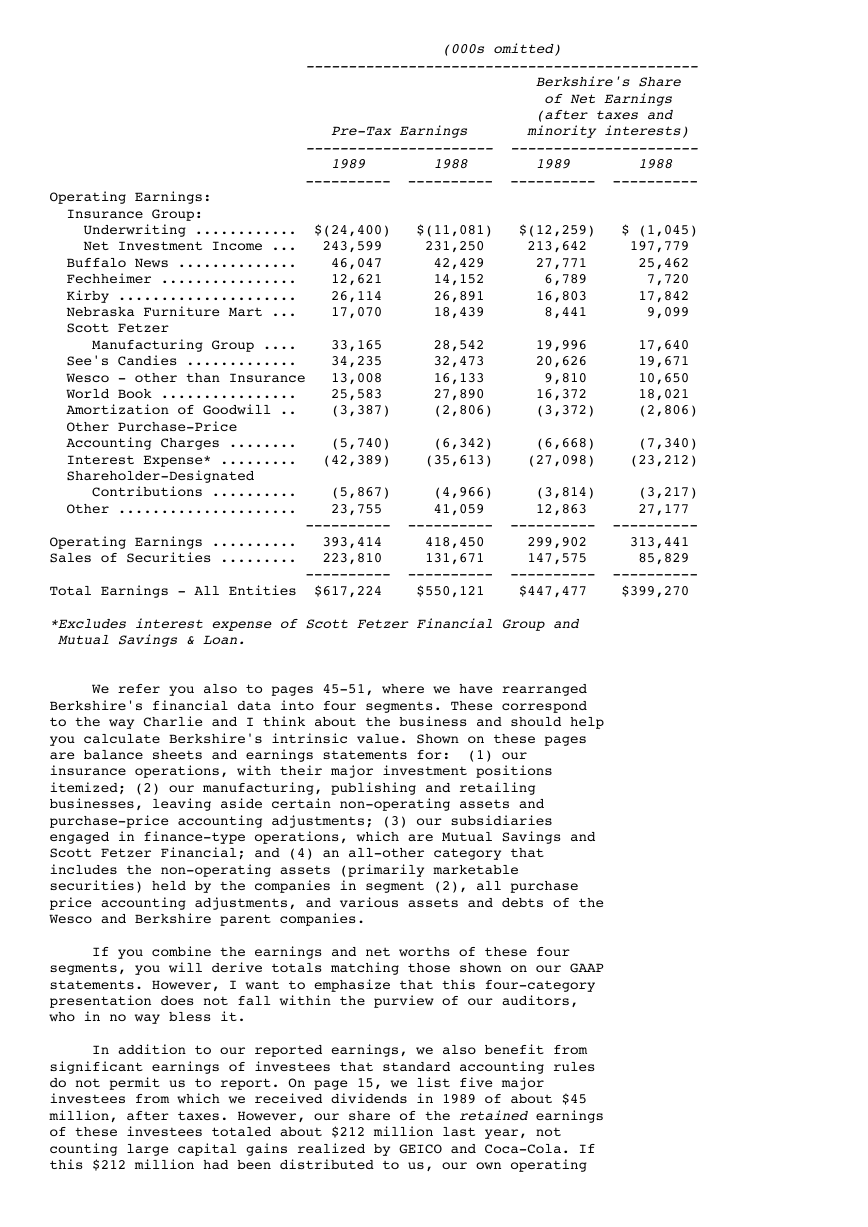
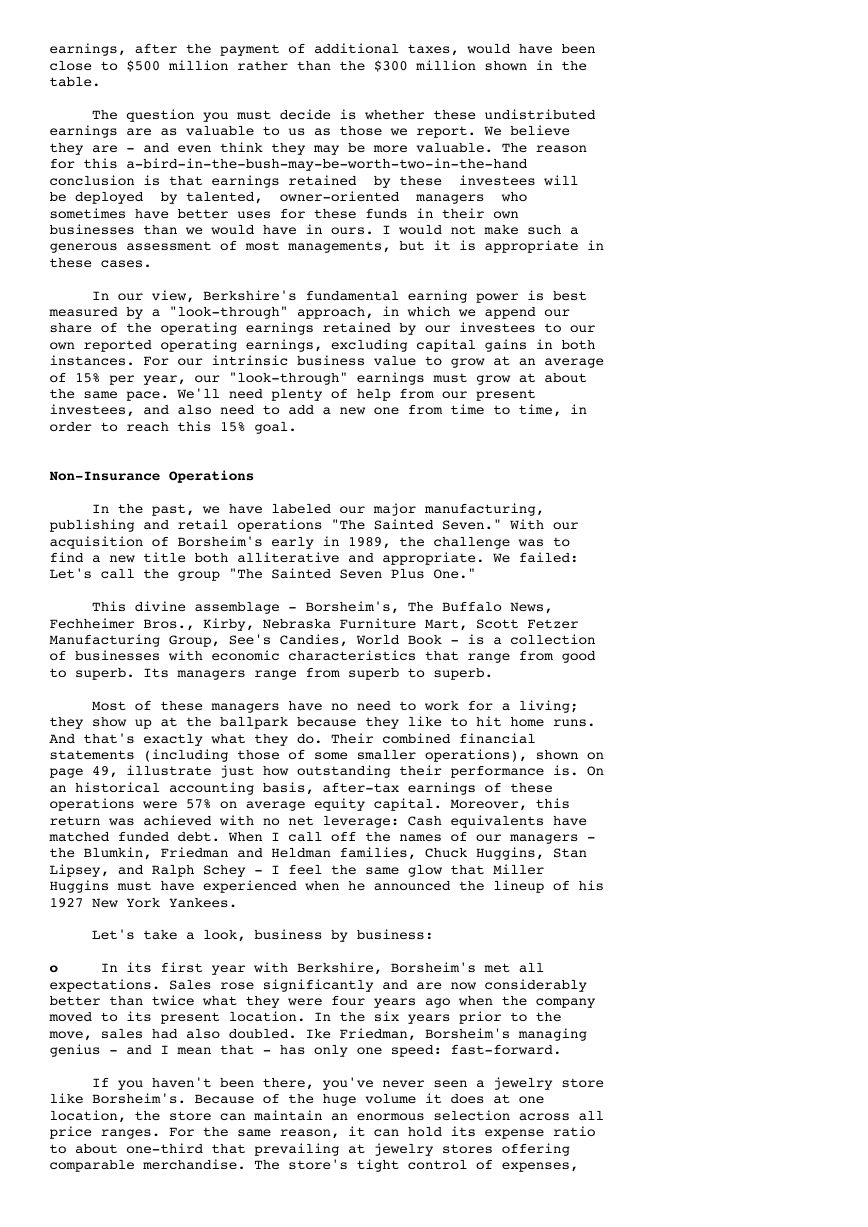

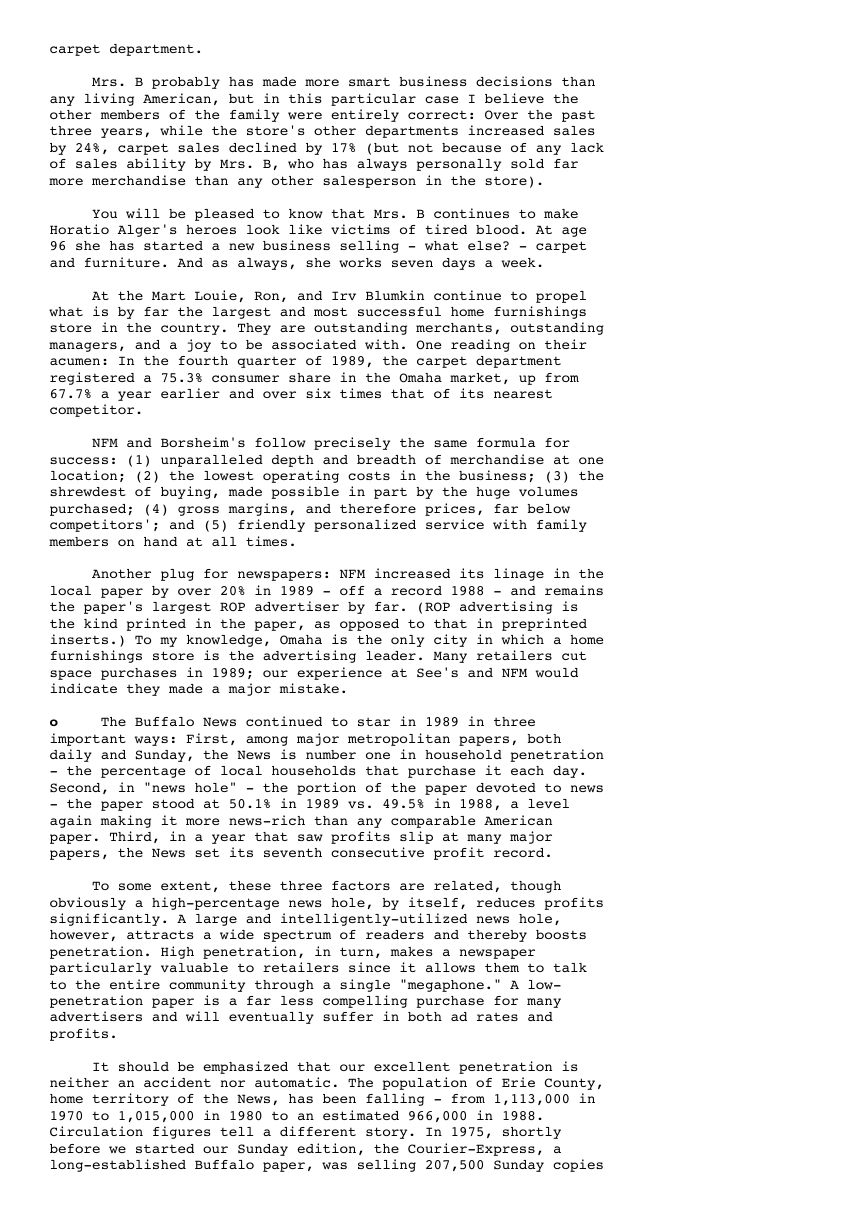









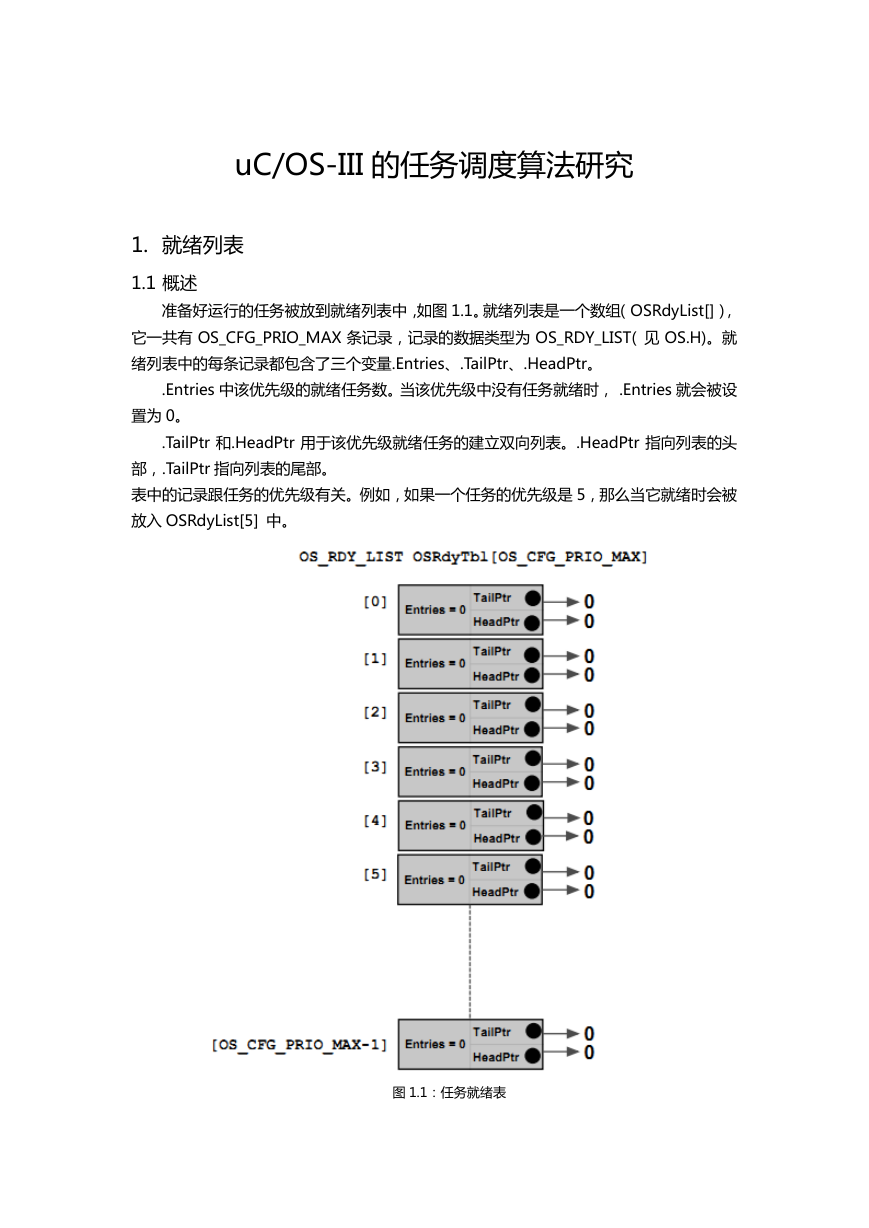 uCOS-III的任务调度算法研究.pdf
uCOS-III的任务调度算法研究.pdf STM32F103x8B_DS_CH_V10(7STM32中文数据手册).pdf
STM32F103x8B_DS_CH_V10(7STM32中文数据手册).pdf FX2N系列PLC培训教程.pdf
FX2N系列PLC培训教程.pdf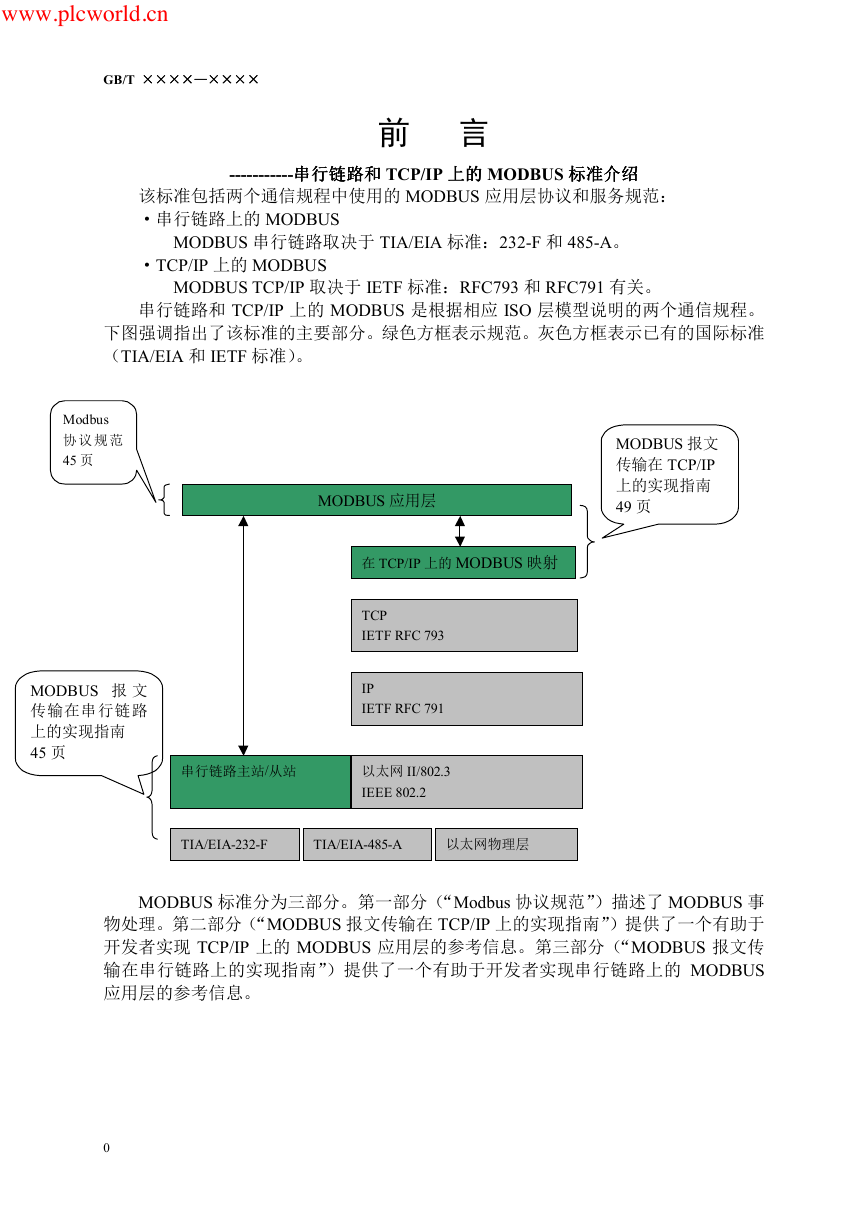 Modbus协议资料.pdf
Modbus协议资料.pdf WM8978中文资料(芯片资料).doc
WM8978中文资料(芯片资料).doc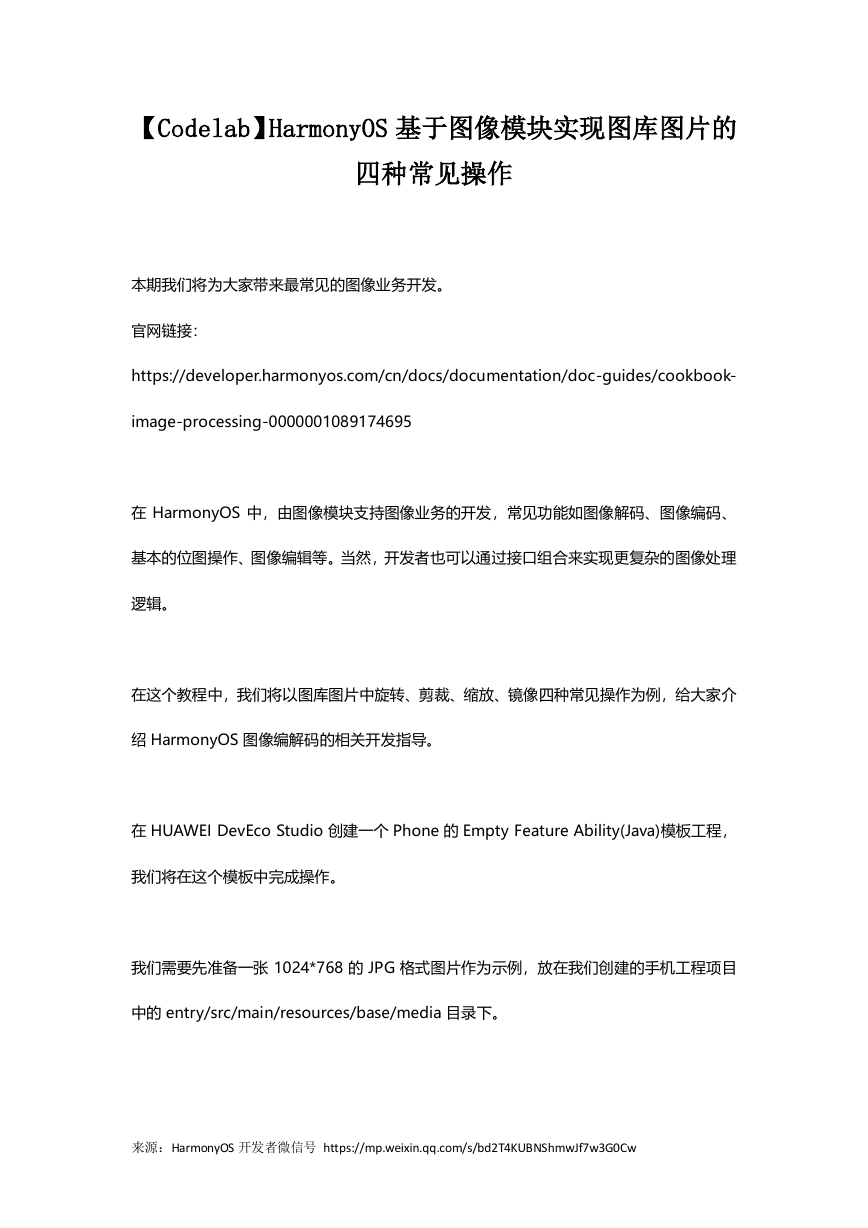 5-1.【Codelab】HarmonyOS基于图像模块实现图库图片的四种常见操作.pdf
5-1.【Codelab】HarmonyOS基于图像模块实现图库图片的四种常见操作.pdf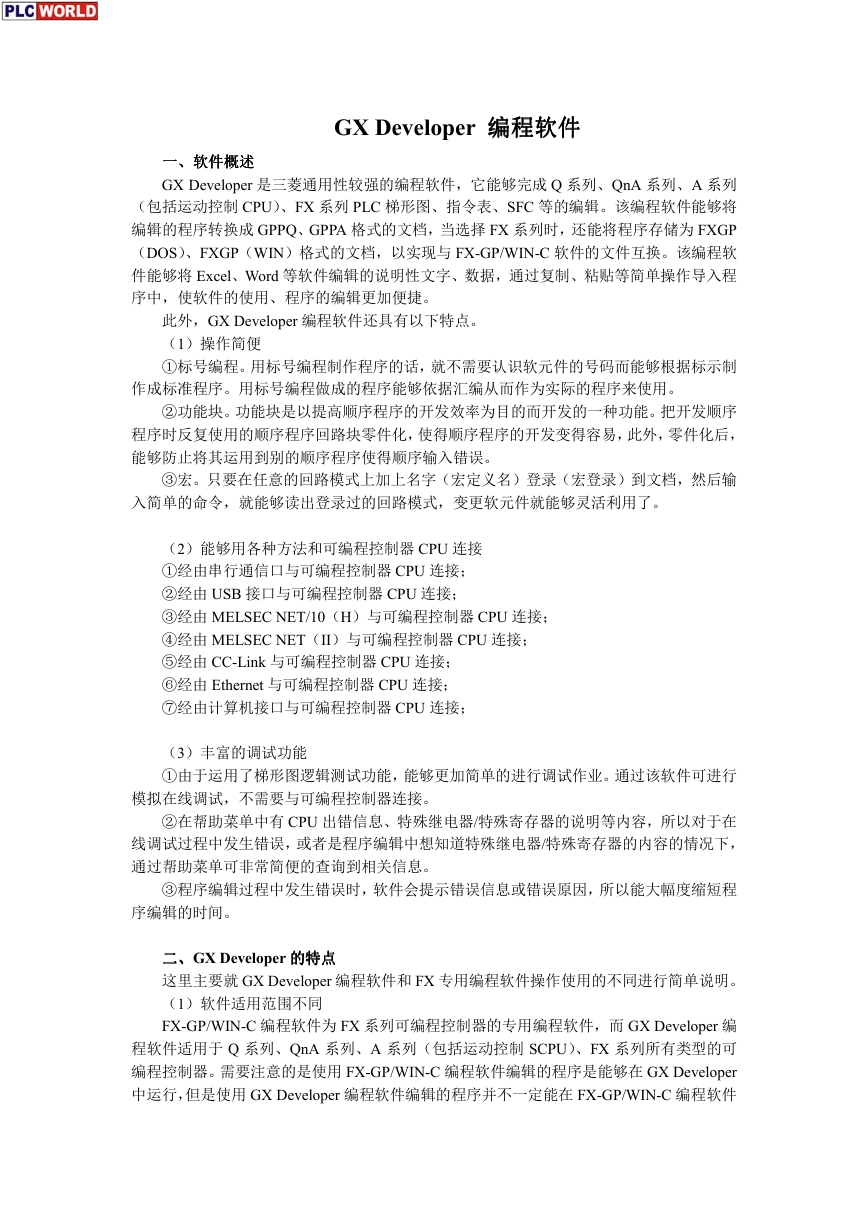 GX Developer 编程软件使用说明.pdf
GX Developer 编程软件使用说明.pdf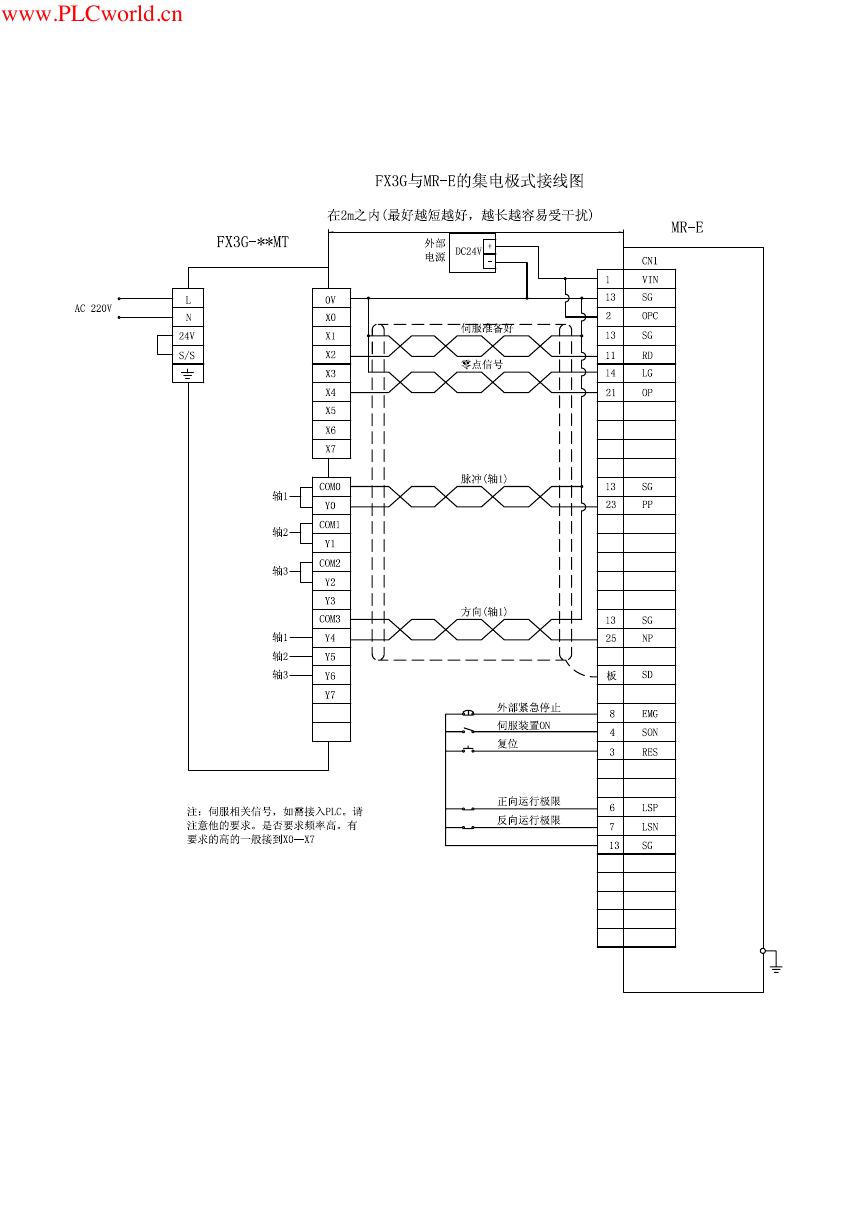 MR-E伺服与FX3G接线图.pdf
MR-E伺服与FX3G接线图.pdf ATK-NEO-6M GPS模块常见问题汇总_201400721.pdf
ATK-NEO-6M GPS模块常见问题汇总_201400721.pdf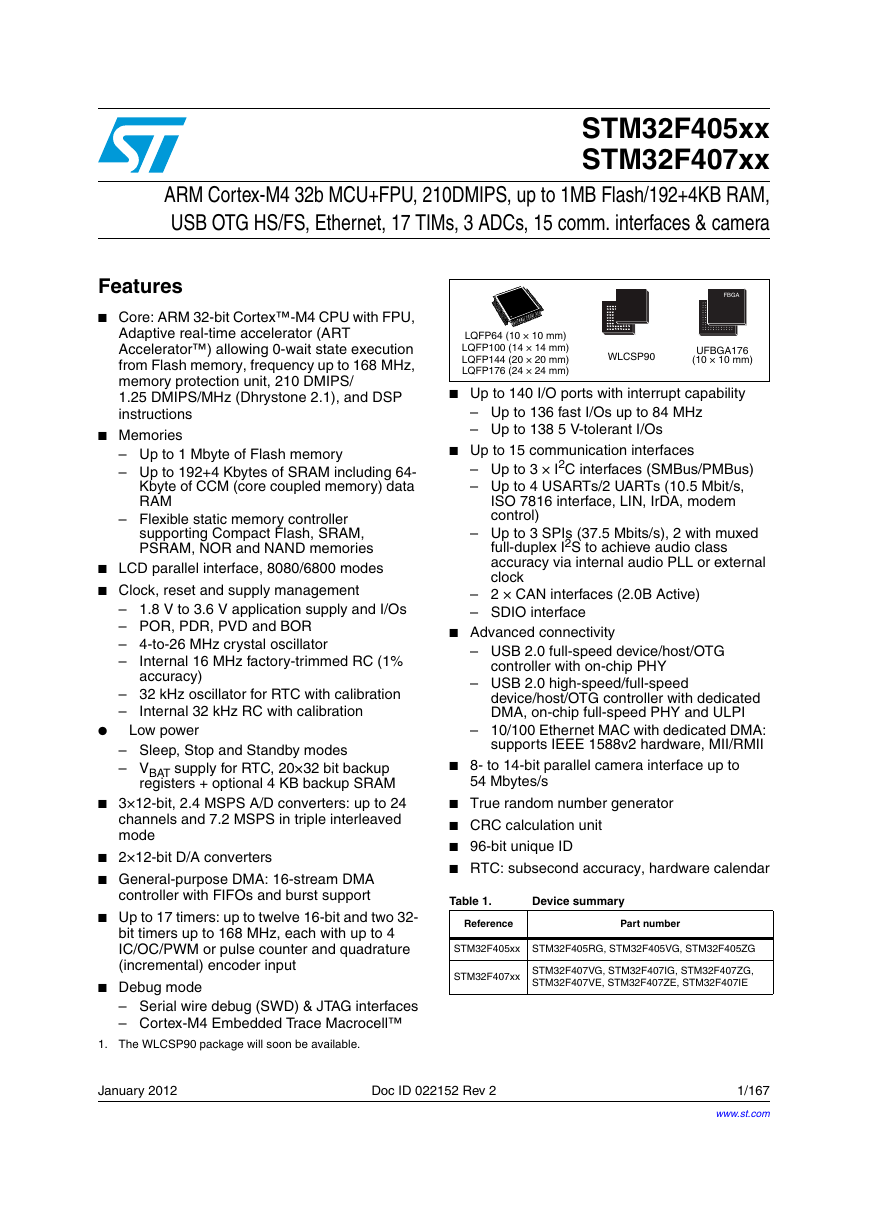 STM32F407ZGT6(芯片资料).pdf
STM32F407ZGT6(芯片资料).pdf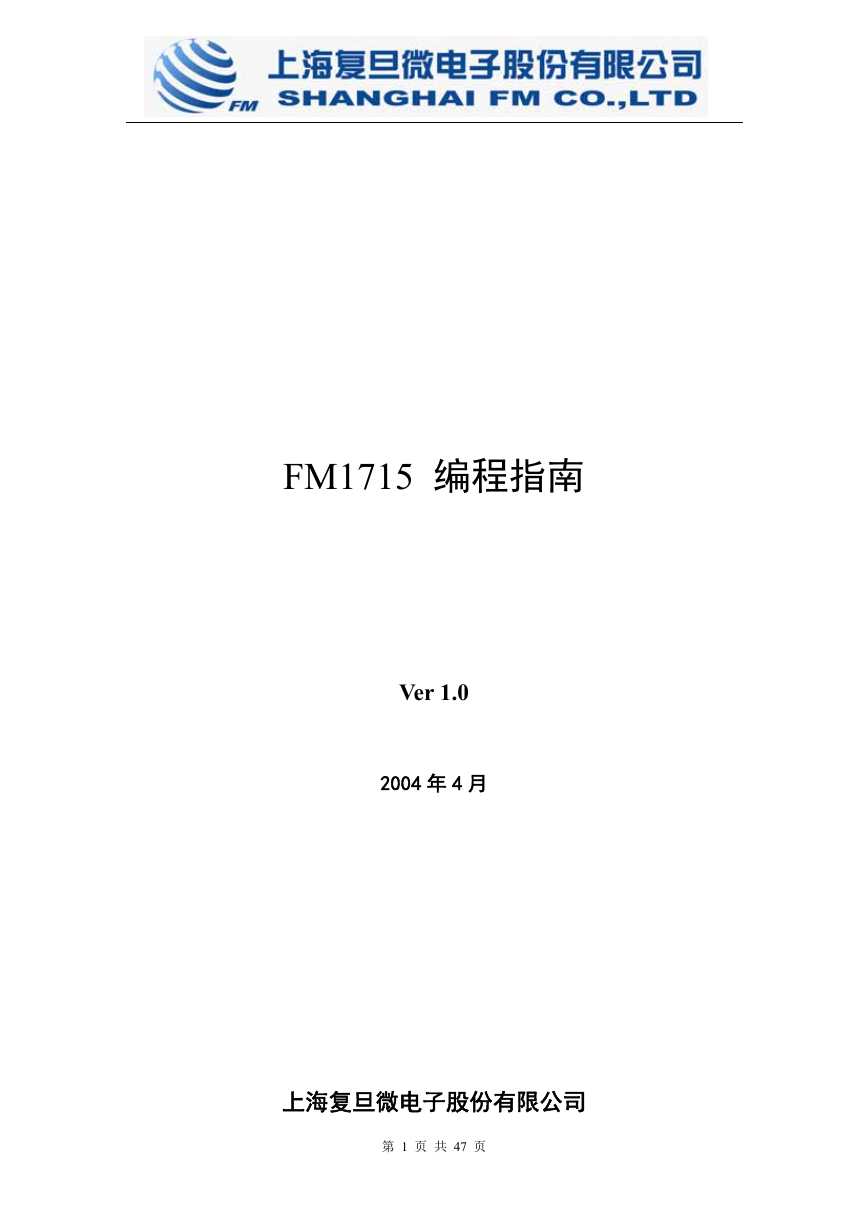 FM1715编程指南.pdf
FM1715编程指南.pdf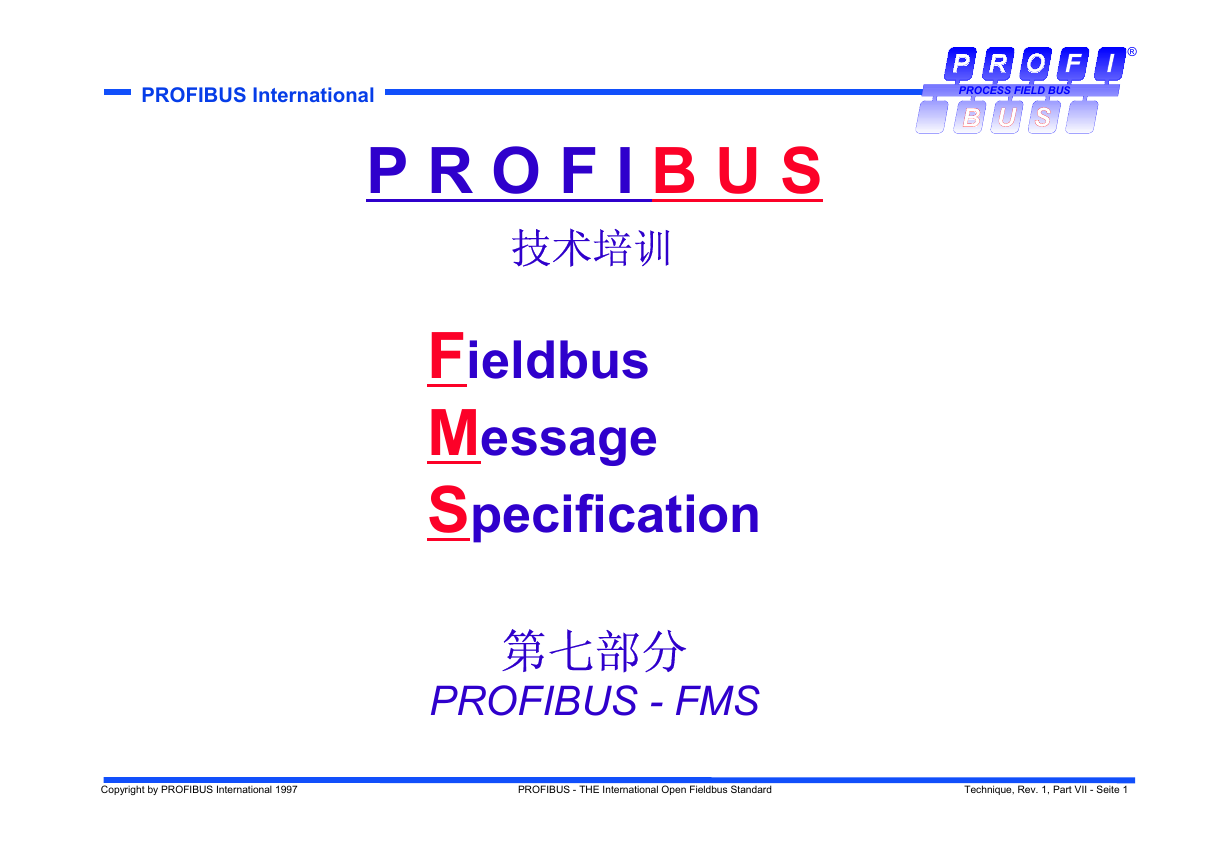 Profibus教程-7.PROFIBUS-FMS.pdf
Profibus教程-7.PROFIBUS-FMS.pdf